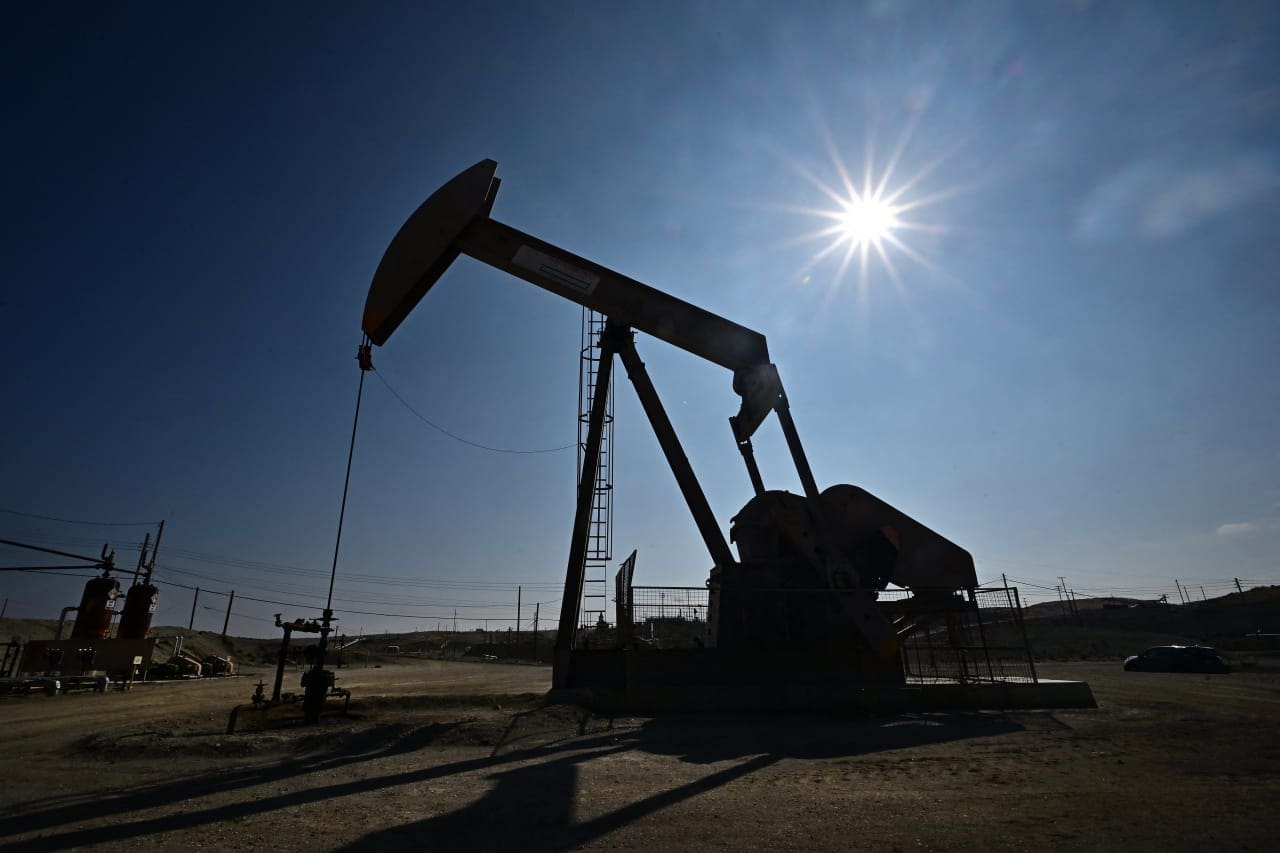Oil futures saw modest losses early Tuesday after Hurricane Beryl appeared to do little lasting damage to energy facilities, following the storm’s landfall on the Texas coast a day earlier.
Price moves
- West Texas Intermediate crude CL00, -1.00% for August delivery CL.1, -1.00% CLQ24, -1.00% was down 5 cents, or nearly 0.1%, at $82.28 a barrel on the New York Mercantile Exchange.
- September Brent crude BRN00, 0.11% BRNU24, 0.11%, the global benchmark, declined 14 cents, or 0.2%, to $85.61 a barrel on ICE Futures Europe.
- August gasoline RBQ24, -0.52%, tacked on 0.6% to $2.5526 a gallon, while August heating oil HOQ24, -2.14%, fell 0.7% to $2.562 a gallon.
- Natural gas for August delivery NGQ24, -1.01%, traded at $2.403 per million British thermal units, up 1.5%.
Market drivers
“The worst of Hurricane Beryl appears to have passed and now the market awaits an assessment of damage to energy infrastructure along the Texan coast. Early indications suggest that most energy infrastructure has come through unscathed,” said Warren Patterson and Ewa Manthey, strategists at ING.
Beryl made landfall Monday morning as a Category 1 hurricane, knocking out power for millions and leading to the cancellation of around 1,700 flights. There were seven confirmed deaths related to the storm in the Houston area, according to the Houston Chronicle.
Beryl earlier this month became the earliest Category 5 hurricane on record in the Atlantic Ocean, stoking fears of an active storm season.
While the storm was seen crimping demand, the effect on supply was limited because the hurricane’s path spared most of the platforms in the Gulf of Mexico, noted Carsten Fritsch, commodity strategist at Commerzbank. Only around 70,000 barrels a day of production had to be suspended, which will be “hardly visible” in weekly Energy Information Administration statistics, he said.
But with an active storm season expected, “it is likely that Beryl will not be the only hurricane to reach the Gulf of Mexico this year. The risk of disruptions to oil and gas production, processing and exports therefore remains,” Fritsch wrote. ”This suggests greater volatility in oil and gas prices in the coming months.”
Over in the Middle East, there is some hope that a ceasefire can be reached in Gaza, with “ongoing negotiations that have so far yielded nothing that would lead to significant change in the current situation,” said Samer Hasn, market analyst at XS.com, in emailed commentary.
A “cessation of hostilities would remove the specter of a regional war preparing to erupt from the gates of southern Lebanon, and it may extend to include more than one country in the region or even outside it, thus maintaining a state of uncertainty in energy markets,” he said.
Meanwhile, Rystad Energy reported improved compliance among the Organization of the Petroleum Exporting Countries and their allies with their production cut agreement. Data showed OPEC+ output was “slightly above” target by 53,000 barrels per day in June, averaging production of 33.903 million bpd.
Claudio Galimberti, global market analysis director at Rystad Energy said in a market update that both crude and petroleum liquids balances are expected to remain tight in the second half of this year, leading to significant stock draws on the back of “high summer demand supported by road transportation and strong aviation and…with OPEC+ improving compliance with production cuts.”
Source: www.marketwatch.com





